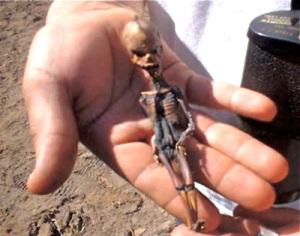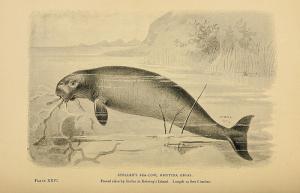Last weekend I journeyed up to Geekfest Nine Worlds Conference to present the short film Devil In The Room as part of The Skeptic Magazine’s strand at the conference. I showed the film and discussed it alongside Dan Denis, researcher for the Sleep Paralysis Project. Dan offered an in-depth tour of the history, science and latest research around the subject. The screening and talk was followed by a lively Q&A and discussion with the brilliant, inquisitive audience.
The Skeptics programme continued with a talk by Paolo Viscadi, curator at the Horniman Museum. Viscadi’s talk explored – and debunked – a range of myths, tales of monsters and fantastical animals. Quickly he took us on a tour of recent cryptozoological darlings of the paranormal press. Through basic biological study he showed how hideous monsters found on beaches and in jungles were simply bloated seals, hairless sloths and racoons with broken bones, while also demonstrating that Bigfoot sightings were most likely simply sightings of bears suffering from mange. Most disturbingly, he showed how a tiny mummified alien which had been found in a graveyard in Peru was almost certainly a human foetus.

Looking into the history of cryptozoology, Viscadi discussed Ripley’s Believe It Or Not as well as PT Barnham, the extraordinary entrepreneur and self-promoter who played the press artfully to ensure crowds flocked to see his weird and wonderful exhibits. Perhaps the most famous of these was the Fiji mermaid of the mid-19th Century. Generally thought now to be a monkeys head and torso sewn to a fish body, Viscadi’s autopsy of a version of the Fiji Mermaid held at the Horniman Museum showed it to be primarily constructed of wood, glue, metal and papier mache, with an animal jaw inserted and a fish tail attached. Not merely a fake mermaid, it’s even a fake Fiji Mermaid.


He also treated the audience to a pit-stop tour of the history of the mermaid myth, which can be attributed to real events such as portrayals of Ama Divers (women in silky sarongs who historically dived for pearls and food in Japan), the birth defect Sirenomelia, dugong, manitee and the amazing but sadly extinct Steller Seacow, whose migration habits fit with locations of reported mermaid sightings.

Viscadi is keen to point out that scepticism is not reactive, and is not characterised by the dismissal of outlandish ideas. Instead it is about considering all things with an open mind and using the best tools available to examine these things. “Watch out for the mystery mongers” he warns us.
The next talk on the Skeptic Programme was by Rob Brotherton, a PhD Candidate working under the supervision of Prof. Chris French at Goldsmith’s Anomolistic Psychology Department.
Brotherton gave a fascinating talk which attempted to redefine the term ‘conspiracy theory’ as, he felt, the current definition did not capture public understanding and so was not operationally useful.
Brotherton put forward his opinion that conspiracy throries are a worldview, a lens through which the whole world is viewed by the theorist. From JFK through 9/11, Diana’s death, fake moon landings and Holocaust Denial, conspiracy throries are referenced everywhere from underground websites to mainstream fiction. The problem, according to Brotherton, is that these theories are often widely believed and have real impact both on convinced individuals and on wider communities. His example was the alleged cover up of a link between the MMR vaccine and autism, a link which is made on no evidence. Claims around this persist even after research is disproved and discourage parents from the useful vaccination. Vaccination distrust is not new. Brotherton points out that in the ’70s, the Pertussis vaccination was thought to cause epilepsy and brain damage, while in the 19th century it was feared and widely believed that the Smallpox vaccine could turn you into a cow. The insidiousness of these theories can impact everyone – for instance climate change deniers may not consider their environmental habits and hard-line theorists can even take extreme violent action in the name of their beliefs, causing public risk (eg. The Oklahoma City Bomber).
Brotherton suggested that a theory can be called a ‘Conspiracy Theory’ if it is:
- Unsubstantiated (by concensus of experts)
- Competing with more plausible explanations
- Pertaining to events of importance
- Assuming malign intent and hypercompetent authorities
- Lacking positive evidence (ie. Largely reliant on negative evidence)
- Self-insulating against correction (able to label all evidence to the contrary as misinformation)
Apparantly there a set of characteristics which can be recognised in most believers of conspiracy theories. These are:
- Mild paranoia
- Openness to ideas
- A sense of Powerlessness: perceived lack of control of personal circumstances (low self-esteem, dissatisfaction with life etc).
It is however difficult to say for sure in which direction the causal relationship works here. Is an individual paranoid because they believe in a hypercompetent, malign controlling power, or does this belief make them paranoid?
Finally, Brotherton outlines some of the cognitive biases which can cloud all of our judgment – whether we are conspiracy theory believers or not. This include:
- Proportionality Bias: a belief that big events must have big causes (e.g. the assassination of JFK was too significant to have been perpetrated by an individual acting alone).
- Patternicity: pattern seeking, finding meaningful patterns in ambiguous stimuli.
- Projection Bias: A tendency to assume people think and act as ourselves. Many people who believe conspiracy theories admit that, in the conspirator’s position, they would act in the same way.
- Intentionality Bias: The tendency to assume ambiguous events are result of intention rather than chance.
- Confirmation Bias: The tendency to select evidence which reaffirms our existing belief system.
At the end of the talk, Brotherton was dealt a challenging set of questions, including some criticism over his definition of conspiracy theories – particularly around ideas of his personal subjective position and choice of what evidence and experts he chose to value.
Elsewhere in the conference there were other interesting events. In one panel, entitled Is the future Utopian or Dystopian? Sci-fi writers Cory Doctrow, Charles Stross, Tricia Sullivan and Jaine Fenn chewed over the two concepts. Stross emphasised that both utopia and dystopia were pre-enlightenment ideas, suggestive of static states of being with no capacity for change. To his mind the only plausible dystopian scenario would be complete technological meltdown – a situation in which technology represents a small spike in history, after which our energy resource will have been used up and we will return to a stone age lifestyle. Doctrow challenged this, suggesting that Singapore is a example of a dystopia as it is ‘prosperous but not free’. Fenn pointed out that a utopia will always be an imposed system unless you can believe that people are able to naturally self-regulate into good society.
Doctrow returned to the idea of utopia and dystopias as static states. He presented a loose model of a utopia which is dynamic, with AI moderating conflict and ambiguity preserved where it is useful (for instance in definitions of family, gender etc). This triggered a tangental but interesting discussion around how computing may collapse the analog spectrum of human existence into a range of discreet states and if we are likely in the future to change the way we live in order to accommodate computers with their binary systems or change computers to accommodate human ambiguity. In response to this Stross recounted a nice anecdote in which farmers have started to selectively breed cows in order to make them more compatible with milking software.
Bringing the conversation back to topic, Doctrow emphasised that his idea of utopia is not static. It fails well, it has multiple positions, it is fluid. It is equitable. The closest we can come to a utopia is a system which can be amended. Only a dystopia can be static. The crushing thing about a police state is the belief that there is no alternative. This is captured by the daddy of all dystopias, 1984, in which the final image the protagonist holds of the future is ‘a boot stamping on a human face forever’. There was also discussion around the complexities of political consent, in a system where consent exists but is encouraged by the active suppression of dissent.
Sullivan summed up her position but asserting that the notion of dystopias vs. utopias is binary and simplistic. It is more crucial, she stated, to consider hope, in all circumstances. She spoke of the untapped human resources in the world, particularly the world’s poor, who are generally treated with sweeping abstract generalisations by Sci-fi writers.
I wish I could have seen more at the conference, which was packed with sci-fi and gaming talent as well as a crowd of proper, old-school geeks. Next year if it’s back here, I’ll be back there.
You can find out more about the Skeptic Magazine and its related groups here, Follow Rob Brotherton‘s work here and Paolo Viscadi here. The ever-wonderful anarcho-tech-sci-fi legend Cory Doctrow is here.
